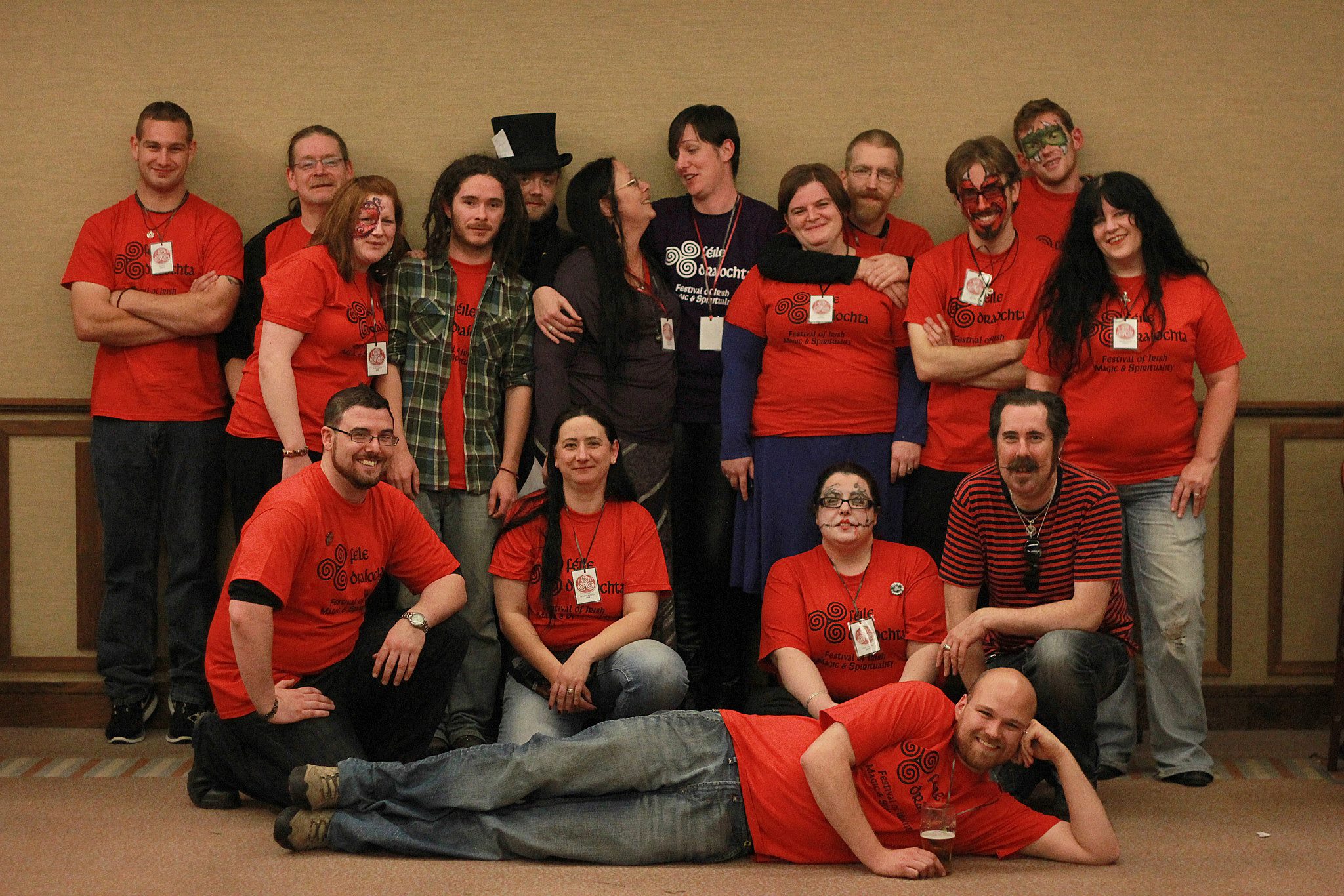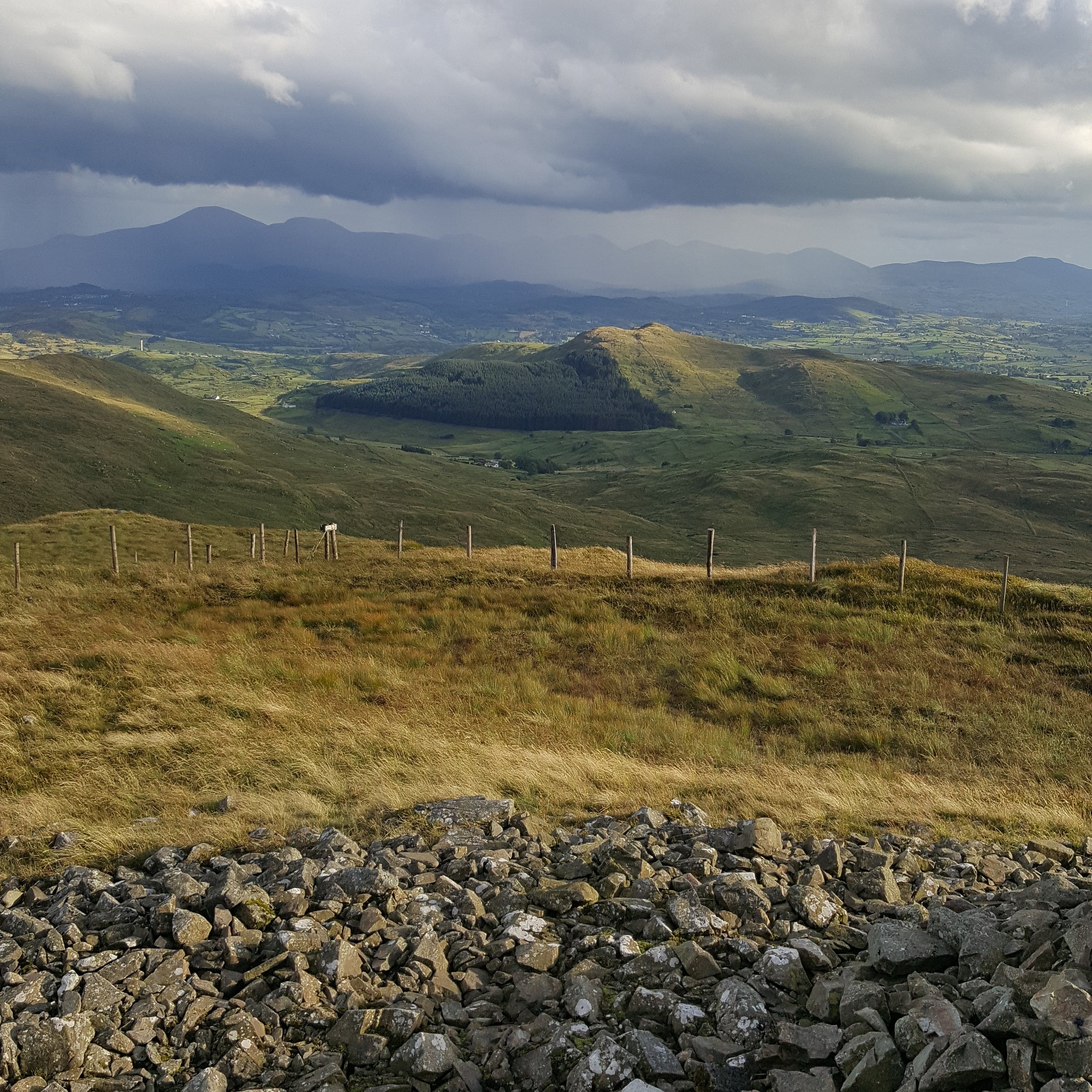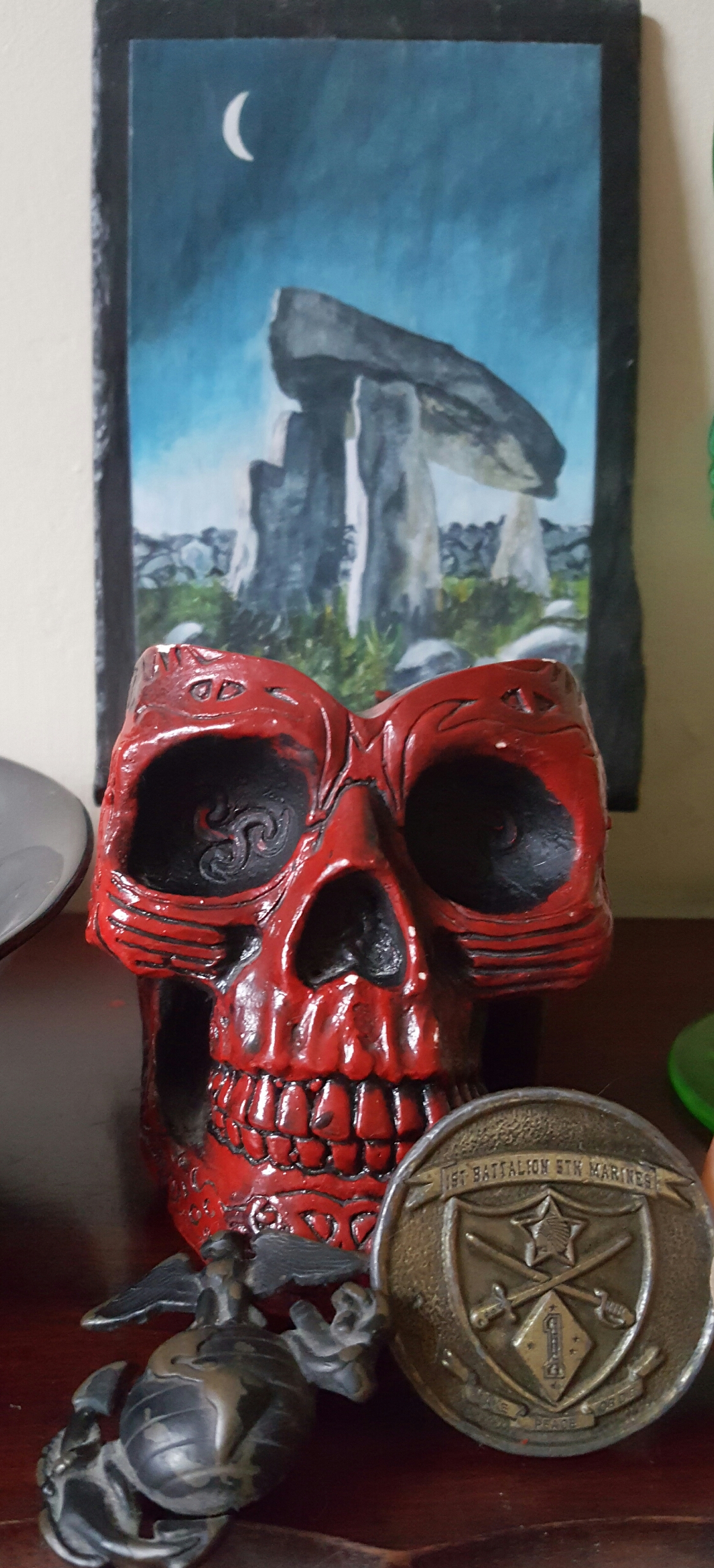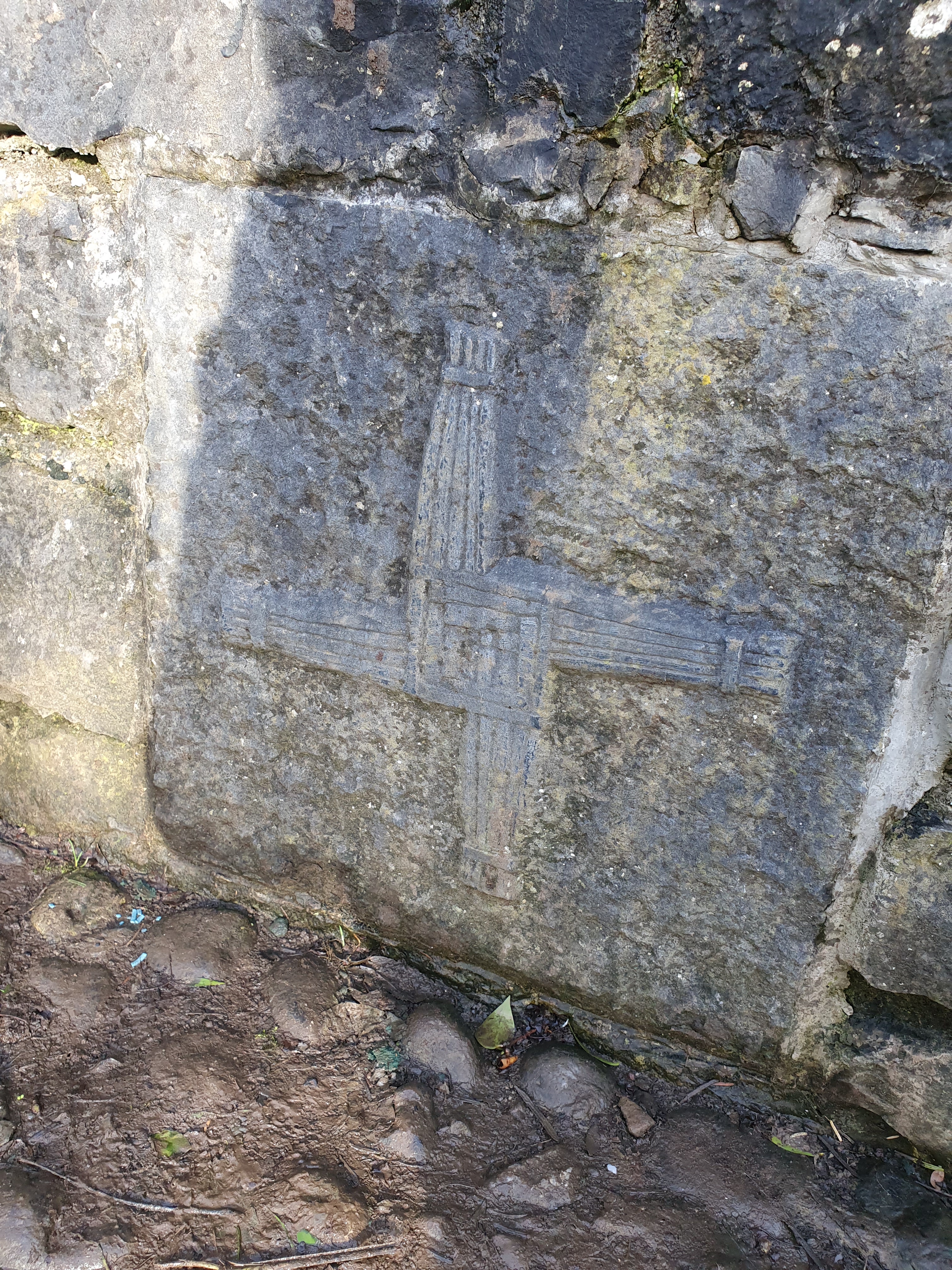
A week into the month of February, and I’m only now accounting for my Imbolg. This year was a bit more memorable than previous ones, as I visited the shrine of the goddess most associated with this festival, Brighid. Brighid (Brigid, Bríd) is an important goddess in Ireland, as she’s venerated with traditions believed to be both pagan, and Christian, being a fusion of both the pre-Christian goddess, and Christian saint. (or one taking the personages from the other) Both are associated with holy wells, and sharing dates with the festival of Imbolg(Oímelg), which also coincides with St. Brigid’s feast day. The syncretism is more clear by having her holy site in Kildare, (Irish Cill Dara, “church of the oak”) where it is believed that pagan priestesses atop of the hill of Kildare kept Brighid’s fire burning, and the trad continued with the nine nuns that kept her perpetual flame burning at her monastery. This flame was recorded to have still been burning in the 12th century, and believed to have remained so until the 16th century, until being relit by the Brigidine Sisters in 1993.
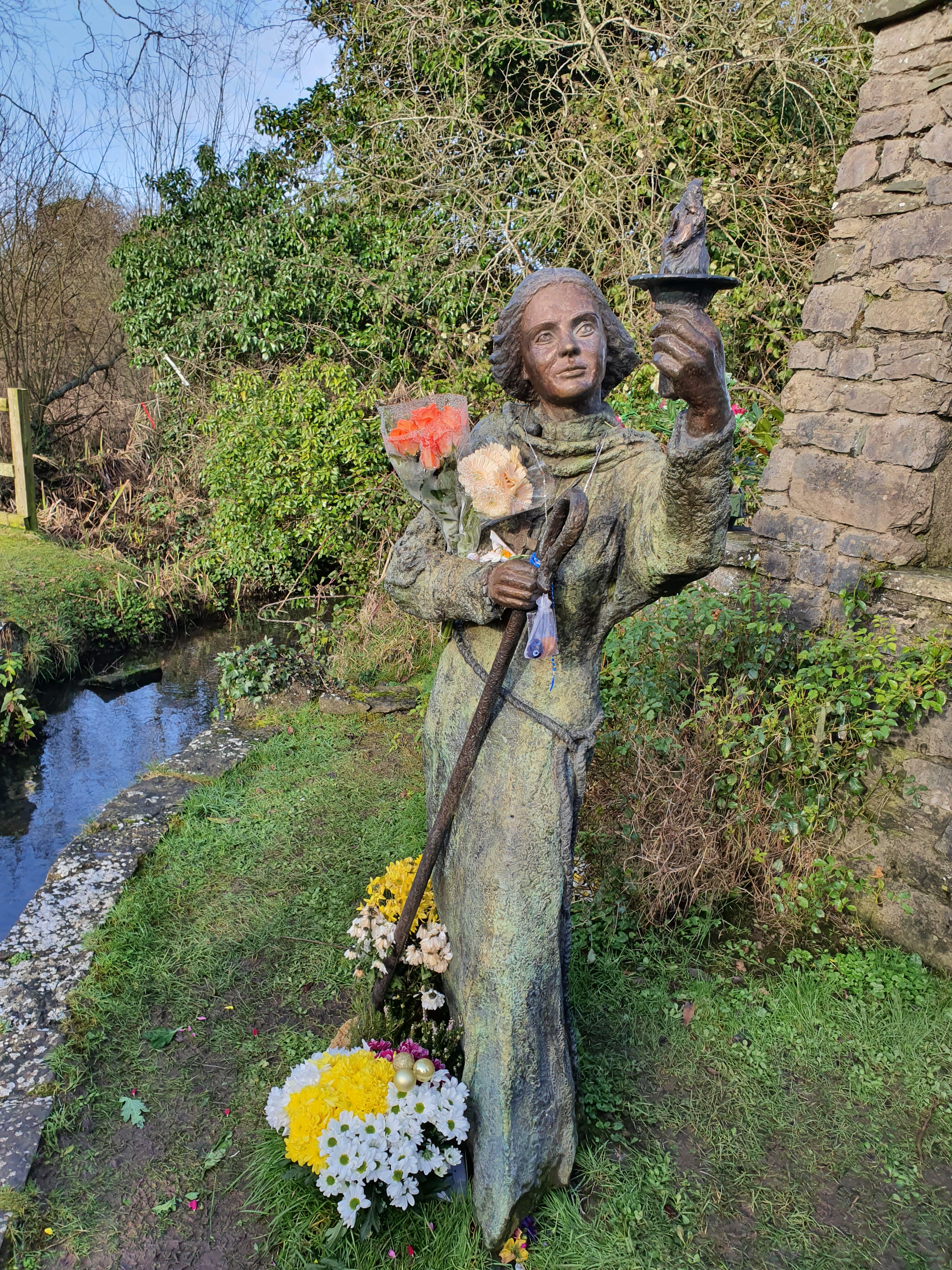
Having some guests with me this year from outside the country, we decided to visit Brighid’s wells the day after our Imbolg Sabbat circle, being Sunday the 2nd this year. Upon our arrival at the holy well there was a Mass taking place, which we stood back from, before being kindly beckoned to come forth. Had to have a laugh with myself when the communion cup was being passed around, as we had just literally been doing the same with our chalice the night before. It wrapped up with a local playing a song for Brighid, which I will say was very “pagan friendly,” not mentioning anything particularly Christian in the lyrics, and tying her to the earth. Afterwards I helped some old ladies fill up their bottles with water from the well, watching everyone bless themselves, and tie clootie rags, while waiting to get a cool as fuck selfie with Brighid’s statue, which looks like she’s just chilling with us along for the craic. We were then invited back to the Solas Bhríde centre for tea.

The centre is a place I’ve been hesitant to, and have not visited in the past. Not only with it being the fact that it’s a well known Christian centre, but also in the myths strange things have been said to have happened to men that got too close to the flame such as becoming cursed or going insane. So much so, that even today, in some paths such as some reconstructionist groups, there’s been controversy over the role in the tradition of flame-keeping being reserved only for females. After meeting and having a nice chat with Mary, the Brigidine nun that relit the flame, I kept this to myself when she offered to guide us into the room, and left us alone to have a moment with the flame. I’m glad I did, because it was an ecstatic experience, and coincidently jogged my memory of envisioning Brighid’s flame at Kildare during our elemental blessings in our ritual the night before, capitalising on the occasion of the Sabbat timing as I usually do.
When I’m visiting holy wells, and other sacred sites, I’m always aware of the rich history and living syncretic traditions, but this is the first that really comes to mind of being present in a communal gathering with both being practiced in unison. The people of Kildare aren’t too slow either! They’re well aware of Brighid’s history, and of all the visitors and different faiths that come, so fair play to them. The centre hosts many events, including more of our festivals such as Samhain, and the Equinoxes(not particularly “Celtic,” for those that don’t observe, but still are revered today as they were in the neolithic). Directly outside the room that hosts the cloistered flame, is a meditative garden encircling a statuue of Brighid given as a gift from the States. This outdoor area is what came to my mind when always trying to envision the fire at Kildare. We walked around it until we found the correct path to enter in order to walk right up to the statue, instead of walking over the garden. Afterwards when our journeys’ were over, I re familiarised myself with the myths, and remembered Brighids flame was protected by hedges, and it was to those that cut through or jumped over, as to bypass those guarding it, that suffered destructive fates. I’m glad to say that I had an amazing experience with the flame, and have not went crazy yet! I’ll remember that tranquility every time I’m throwing my Brighid’s cross from the year before, into the fire.


